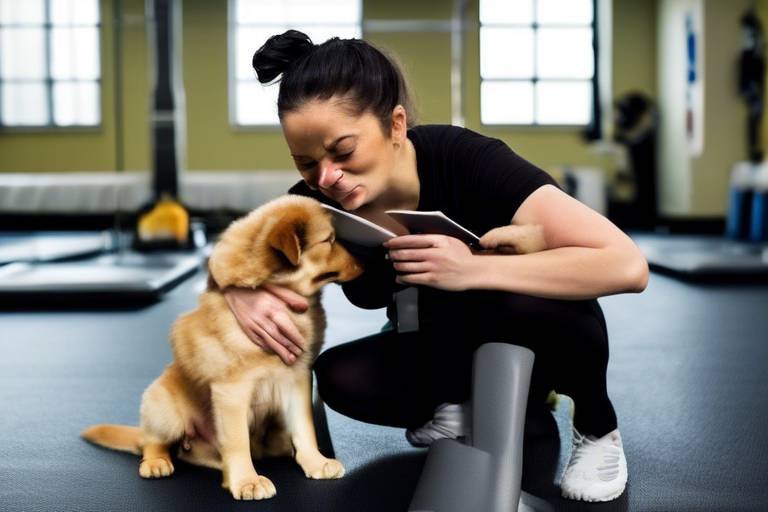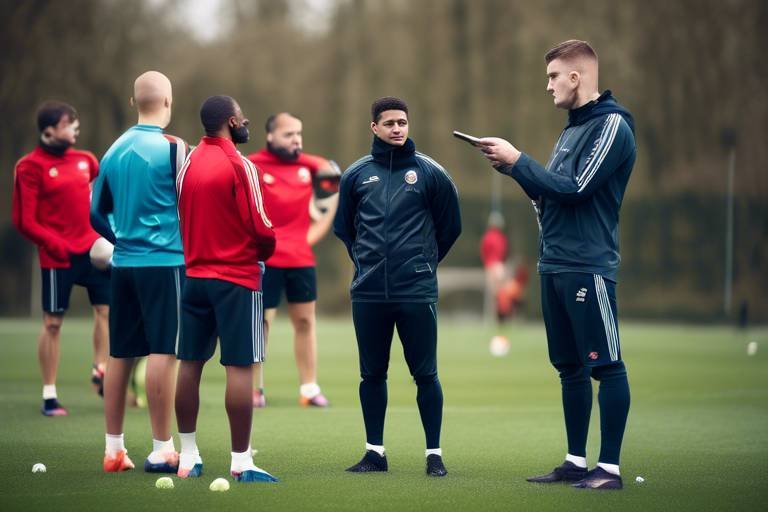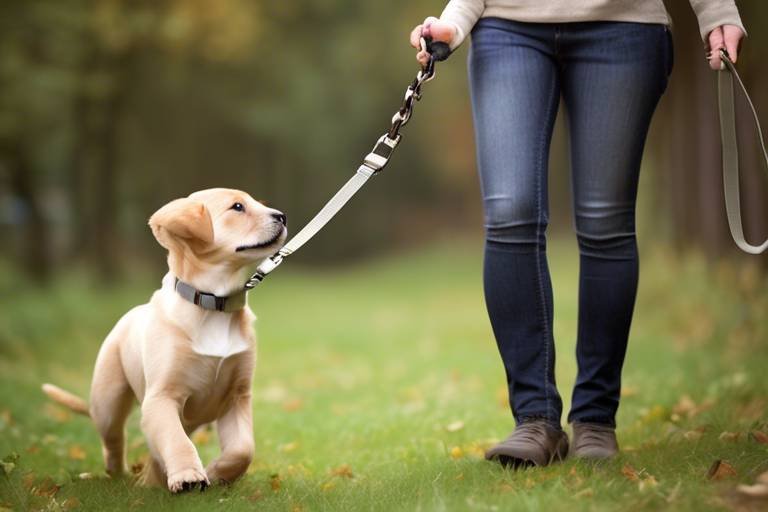How to Use Body Language to Train Your Dog
Training your dog can be one of the most rewarding experiences, but did you know that the key to effective training lies not just in your words, but in your body language? That's right! Dogs are incredibly perceptive creatures, and they pick up on our non-verbal cues just as much, if not more, than our verbal commands. In this article, we will explore the effective techniques for using body language in dog training, emphasizing the importance of non-verbal communication, understanding canine behavior, and ultimately building a strong bond between you and your furry friend.
Imagine your dog as a little sponge, soaking up every gesture, every posture, and every facial expression you make. When you communicate effectively through body language, you not only help your dog understand what you want, but you also create a deeper connection that enhances trust and cooperation. So, are you ready to dive into the fascinating world of canine body language? Let’s get started!
Recognizing your dog's body language is essential for effective communication. Just like humans, dogs have their own ways of expressing emotions and intentions, and understanding these signals can significantly improve your training sessions. For instance, a wagging tail might indicate excitement, while a lowered body posture can signal submission or fear. By paying close attention to these signals, you can tailor your training approach to better suit your dog's needs.
Here are some basic canine signals to look out for:
- Posture: A relaxed dog will have a loose, wiggly body, while a tense dog may appear stiff and rigid.
- Tail Position: A high, wagging tail usually means happiness, while a tucked tail can indicate anxiety or fear.
- Facial Expressions: A relaxed face with soft eyes indicates comfort, whereas a dog with a tight-lipped mouth or furrowed brow may be stressed.
By learning to recognize these signals, you can communicate more effectively with your dog, making training a more enjoyable experience for both of you.
When it comes to dog training, consistency is key. Imagine trying to learn a new language where the rules change every day; it would be incredibly confusing, right? The same goes for your dog. By maintaining the same signals and cues, you help your dog learn more effectively and reduce confusion during training sessions. Think of your body language as a language of its own, one that your dog needs to understand to succeed.
Clear, distinct signals are essential for effective communication with your dog. This means using specific gestures and postures consistently to convey commands and reinforce desired behaviors. For instance, if you want your dog to sit, you might raise your hand with your palm facing down while saying the command. By pairing this gesture with the verbal command, you create a clear association that your dog can learn to recognize.
Incorporating positive reinforcement with body language can significantly enhance your training success. When your dog responds correctly to your body signals, reward them with a treat or praise. This way, your dog will begin to associate the physical cues with positive outcomes, making them more likely to repeat the desired behavior in the future.
Mixed signals can confuse your dog and hinder training progress. It's vital to align your verbal commands with your body language. For example, if you say "come" while turning away from your dog, they might not understand what you want. Consistency in your commands and your body language will ensure clarity and prevent misunderstandings during training sessions.
Understanding your dog's signals can greatly improve your training approach. By interpreting your dog's body language, you can adjust your training methods and respond appropriately to their needs. For instance, if your dog appears anxious during a training session, it might be a sign that you need to slow down and create a more relaxed atmosphere.
Establishing trust is vital for effective training. When you use body language to communicate with your dog, you are fostering a safe and supportive training environment. Dogs are naturally attuned to human emotions, so when you project calmness and confidence through your body language, your dog will feel more secure. This trust is essential for successful training outcomes.
A calm training environment enhances your dog's ability to learn. Your body language can significantly influence your dog's stress levels. For example, standing tall with relaxed shoulders and a gentle demeanor can create a sense of safety for your dog. On the other hand, if you're tense or anxious, your dog may pick up on those feelings, making it harder for them to focus.
Socialization is crucial for a well-rounded dog. Body language plays a vital role in facilitating positive interactions with other dogs and people. For instance, if you approach another dog with a relaxed posture and open body language, it encourages your dog to feel confident and friendly. This helps your dog develop good manners and social skills, making them a joy to be around.
Q: Can I train my dog without using verbal commands?
A: Absolutely! Many dogs respond well to body language alone. Just ensure that your signals are clear and consistent.
Q: How long does it take for my dog to understand body language cues?
A: It varies by dog, but with patience and consistency, most dogs can learn to respond to body language cues within a few weeks.
Q: What should I do if my dog doesn’t respond to my body language?
A: If your dog isn’t responding, reassess your signals and ensure they are clear. It may also be beneficial to go back to basic commands and reinforce them with positive reinforcement.

Understanding Canine Body Language
This article explores effective techniques for using body language in dog training, emphasizing non-verbal communication, understanding canine behavior, and building a strong bond between you and your pet.
Recognizing your dog's body language is essential for effective communication. Just like humans, dogs express their feelings and intentions through various physical cues. Understanding these signals can significantly enhance your training sessions and strengthen your bond with your furry friend. For instance, a wagging tail is often seen as a sign of happiness, but did you know that the position and speed of that wag can tell you much more? A slow wag can indicate uncertainty, while a high, fast wag might mean excitement. By paying close attention to these details, you can better interpret your dog's emotions.
Let’s break down some key elements of canine body language:
- Posture: A dog's posture can reveal a lot about how they are feeling. A relaxed dog will have a loose body, whereas a tense dog might have a stiff stance and raised fur.
- Tail Position: The position of a dog's tail is a crucial indicator of their mood. A tail held high often signifies confidence, while a low or tucked tail can indicate fear or submission.
- Facial Expressions: Dogs communicate a range of emotions through their faces. A relaxed mouth and soft eyes usually indicate contentment, while a furrowed brow or bared teeth can signal discomfort or aggression.
Moreover, dogs also use their ears and eyes to communicate. Ears perked up can show attentiveness, while ears pulled back might indicate fear or submission. Similarly, direct eye contact can be seen as a challenge, while averting their gaze can signal submission or discomfort. By observing these signals, you can gain insight into your dog's state of mind and adjust your training methods accordingly.
Understanding these nuances is not just about recognizing what your dog is feeling; it’s about responding appropriately. For example, if your dog is showing signs of stress during training, such as yawning or licking their lips, it may be time to take a break or change the environment. This responsiveness helps create a more positive training experience, making your dog more willing to engage and learn.
In conclusion, being attuned to your dog's body language is a vital skill for any dog owner. It allows you to communicate effectively, adjust your training techniques, and foster a deeper connection with your pet. The better you understand your dog’s signals, the more successful your training will be.
Consistency in your body language is crucial for effective training. This part discusses how maintaining the same signals and cues can help your dog learn more effectively and reduce confusion during training sessions.
Clear, distinct signals help your dog understand what you expect from them. This subsection highlights the importance of using specific gestures and postures consistently to convey commands and reinforce desired behaviors.
Incorporating positive reinforcement with body language enhances training success. This section explores how to pair physical cues with rewards, ensuring your dog associates the gestures with positive outcomes.
Mixed signals can confuse your dog and hinder training progress. This part emphasizes the need to align verbal commands with body language, ensuring clarity and preventing misunderstandings during training sessions.
Understanding your dog's signals can improve your training approach. This section discusses how to interpret your dog's body language to adjust your training methods and respond appropriately to their needs.
Establishing trust is vital for effective training. This section explains how using body language can strengthen the bond between you and your dog, fostering a safe and supportive training environment.
A calm training environment enhances your dog's ability to learn. This subsection discusses how your body language can influence your dog's stress levels and promote a more relaxed atmosphere during training.
Socialization is crucial for a well-rounded dog. This part explores how body language can facilitate positive interactions with other dogs and people, helping your dog develop confidence and good manners.
Q: How can I tell if my dog is stressed during training?
A: Look for signs such as yawning, licking lips, or a tucked tail. These can indicate that your dog is feeling overwhelmed.
Q: Is it important to use the same body language for different commands?
A: Yes! Consistency helps your dog learn and understand what you expect from them, reducing confusion during training.
Q: Can I train my dog without using verbal commands?
A: Absolutely! Many dogs respond well to body language cues alone. Just ensure your signals are clear and consistent.
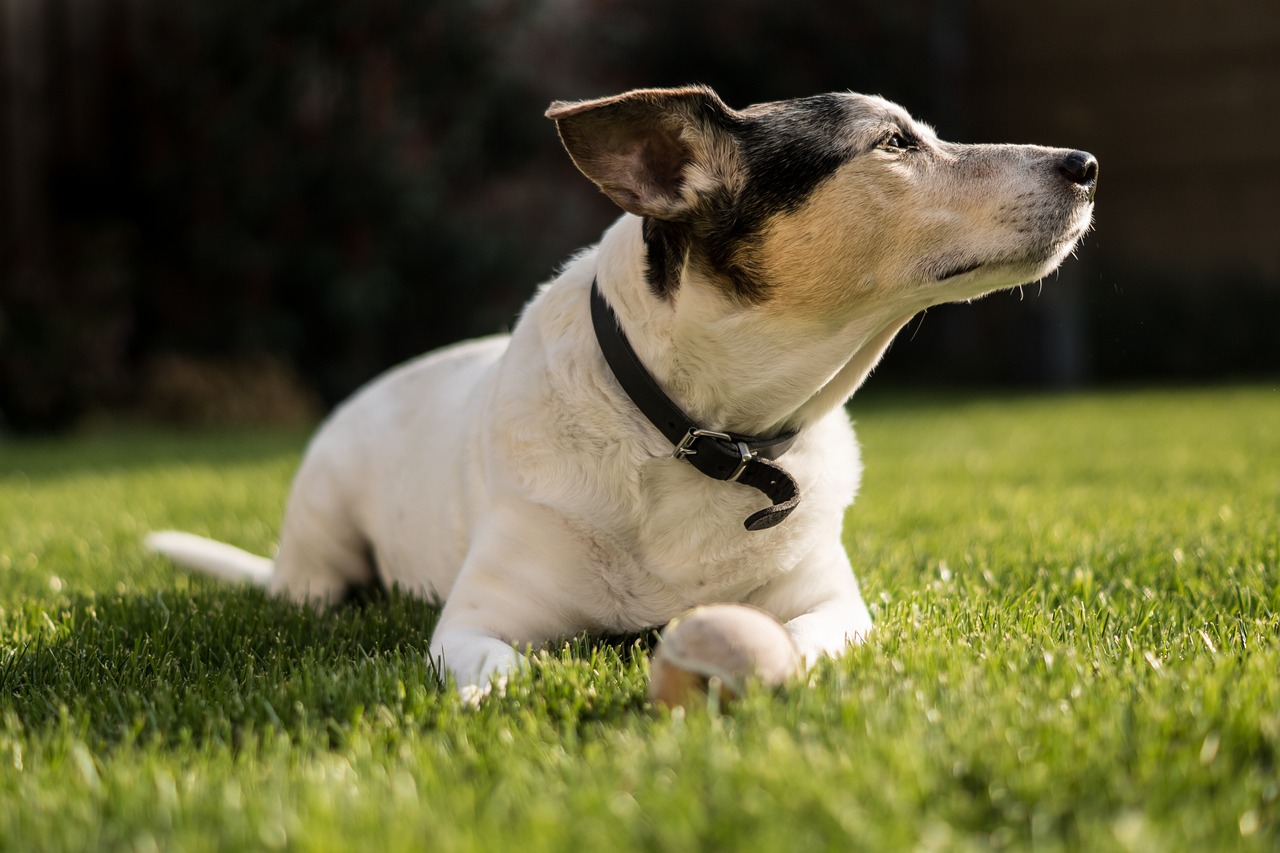
The Importance of Consistency
When it comes to dog training, consistency is not just a buzzword; it's a fundamental principle that can make or break your efforts. Imagine trying to learn a new language where the rules change every day—confusing, right? That's exactly how your dog feels if you don’t maintain consistent body language and signals during training sessions. By establishing a clear set of cues, you help your furry friend understand what you expect from them, which leads to quicker learning and a more harmonious relationship.
One of the key aspects of consistency is using the same gestures and postures every time you communicate with your dog. For instance, if you use a specific hand signal to indicate "sit," make sure you use that same signal every single time. If one day you wave your hand to signal "sit" and the next day you point to the ground, your dog will be left scratching their head in confusion. This inconsistency can lead to frustration for both you and your pet, making training sessions feel more like a game of charades than effective communication.
Moreover, consistency isn't just about the physical signals; it also extends to your verbal commands. Aligning your verbal cues with your body language is crucial. If you say "come" but are facing away from your dog, your body language sends a mixed message. Dogs are incredibly perceptive to our movements and expressions, so if your body language contradicts your words, it can create uncertainty in your dog. This is why a harmonious blend of verbal and non-verbal communication is essential for effective training.
To illustrate the importance of consistency, consider the following points:
- Reduces Confusion: Dogs thrive on routine and predictability. Consistent signals help them know exactly what to do.
- Enhances Learning: When your dog understands what is expected, they can learn faster and more effectively.
- Builds Confidence: A dog that knows what you want will feel more confident in their actions, leading to a more positive training experience.
In summary, consistency in your body language and commands is vital for effective dog training. By establishing clear and distinct signals, you make it easier for your dog to understand and respond to your expectations. This not only enhances their learning but also fosters a deeper bond between you and your furry companion. So, the next time you embark on a training session, remember: clarity and consistency are your best friends!
Establishing Clear Signals
When it comes to training your dog, clarity is key. Think of your body language as a silent language that speaks volumes to your furry friend. Just as humans rely on facial expressions and gestures to convey emotions and intentions, dogs are incredibly perceptive to the non-verbal cues we give them. Establishing clear signals not only helps your dog understand what you want but also reinforces the bond between you two. Imagine trying to communicate with someone who speaks a different language; it can be frustrating and confusing, right? This is exactly how your dog feels when your signals are muddled.
To create a solid foundation for your dog's training, you need to develop a consistent set of gestures and postures. For instance, if you want to signal "sit," you might use a gentle hand motion alongside the verbal command. This dual approach reinforces the message you're trying to convey. Remember, dogs are visual learners; they thrive on clear and distinct signals. If you raise your hand to signal "stay," make sure that the gesture is always the same. Consistency in your body language will help your dog learn faster and more effectively.
Here are some tips to establish clear signals:
- Choose Simple Gestures: Use easy-to-understand gestures that can be easily remembered by your dog.
- Be Consistent: Always use the same gesture for the same command to avoid confusion.
- Pair with Verbal Commands: Combine your gestures with verbal cues to reinforce learning.
- Practice Regularly: Frequent practice helps solidify the signals in your dog's mind.
Additionally, consider your dog's perspective. If your dog seems confused or unsure, it might be time to reassess the signals you're using. Are they too complicated? Are they inconsistent? By paying attention to your dog's reactions, you can adjust your approach to ensure they fully grasp what you're trying to communicate. Remember, training should be a fun and rewarding experience for both of you!
In summary, establishing clear signals is essential for effective dog training. By using consistent gestures and combining them with verbal commands, you create a language that your dog can understand. This not only enhances their learning but also strengthens the bond you share. So, next time you step into training mode, think about the signals you're sending and how they can make all the difference in your dog's response.
Q: How can I tell if my dog understands my signals?
A: If your dog responds correctly to your commands and shows signs of engagement, like wagging their tail or making eye contact, they likely understand your signals.
Q: What should I do if my dog seems confused by my signals?
A: Reassess your gestures and ensure they are simple and consistent. You may also want to practice more to help reinforce their understanding.
Q: Can I use different signals for the same command?
A: It's best to stick to one clear signal for each command to avoid confusion. However, once your dog has mastered a command, you can gradually introduce variations.
Using Positive Reinforcement
When it comes to training your dog, positive reinforcement is like the secret sauce that makes everything better. Imagine if every time you did something good at work, your boss rewarded you with a bonus or a day off. Wouldn’t that motivate you to perform even better? That’s exactly how your furry friend feels when you pair physical cues with rewards. It’s a win-win situation that not only enhances training success but also strengthens the bond between you and your pup.
So, how does this work in practice? First, let’s talk about the different types of rewards you can use. While treats are often the go-to choice, they’re not the only option. You can also use praise, toys, or even playtime as rewards. The key is to find what excites your dog the most. For instance, if your dog lights up at the sight of their favorite squeaky toy, use that as a reward for good behavior. This way, they’ll start associating your body language and commands with something they truly love.
Here’s a simple breakdown of how to effectively implement positive reinforcement in your training routine:
- Timing is Everything: Make sure to reward your dog immediately after they perform the desired behavior. This helps them make the connection between the action and the reward.
- Be Consistent: Use the same signals and cues each time to avoid confusion. If you’re using a hand signal for “sit,” make sure it’s always the same.
- Mix It Up: Keep your dog engaged by varying the rewards. Sometimes use treats, other times use praise or play. This keeps the training sessions exciting!
Incorporating positive reinforcement with body language is not just about getting your dog to obey commands; it’s about building a trusting relationship. When your dog sees that their actions lead to positive outcomes, they’re more likely to repeat those behaviors. It’s like a beautifully choreographed dance where both you and your dog move in sync, responding to each other’s cues. Over time, this creates a strong foundation of trust and understanding.
Remember, the goal is to create a positive training environment where your dog feels safe and motivated to learn. If they know that good behavior leads to treats and praise, they’ll be more enthusiastic about training. So, the next time you’re working with your pup, think about how you can incorporate positive reinforcement. It’s amazing how a little encouragement can go a long way in shaping your dog’s behavior.
Avoiding Mixed Signals
When it comes to training your dog, clarity is key. Imagine trying to solve a puzzle where some pieces just don't fit; that's how your dog feels when they receive mixed signals from you. Mixed signals can lead to confusion and frustration, not just for your furry friend but for you as well. To avoid this, it’s essential to ensure that your verbal commands and body language are aligned. For instance, if you’re telling your dog to sit while leaning forward excitedly, it sends a confusing message. Your dog might think, “Are we playing? Should I stay or go?” This is why consistency in your actions is crucial.
To illustrate the importance of alignment, consider the following common scenarios:
| Verbal Command | Body Language | Potential Mixed Signal |
|---|---|---|
| “Come” | Standing still with arms crossed | Your dog might think you’re not really inviting them. |
| “Stay” | Moving towards the dog | Confusion about whether they should stay put or come to you. |
| “Down” | Pointing upwards | Your dog may get mixed up about what you want. |
Consistency means using the same gestures and cues every time. If you want your dog to associate a specific hand signal with a command, make sure you use that same signal each time. For example, if you raise your hand to signal “sit,” do it in the same manner every time. This repetition helps your dog learn more effectively and reinforces their understanding of what you expect.
Moreover, it’s not just about avoiding mixed signals from you; it’s also about ensuring that everyone in your household is on the same page. If one person uses a different command or gesture, it can lead to even more confusion for your dog. You might think, “Oh, it’s just a little different,” but for your dog, it’s like speaking two different languages at once. To prevent this, consider having a family meeting where everyone agrees on the commands and signals to use. This way, your dog will receive a clear and consistent message no matter who is training them.
Lastly, always be aware of your own body language when giving commands. Dogs are incredibly perceptive and can pick up on subtle cues that you might not even realize you're giving. For instance, if you’re feeling anxious or frustrated, your dog might sense that and become anxious themselves, leading to an even greater risk of mixed signals. So, take a moment to check in with yourself before you start a training session. Are you calm and confident? If not, it might be best to wait until you’re in the right mindset to train.
In conclusion, avoiding mixed signals is about creating a clear and supportive training environment for your dog. By ensuring that your verbal commands and body language are in sync, you’ll foster a better understanding and a stronger bond with your furry companion. Remember, training should be a fun and rewarding experience for both of you!
- What are mixed signals in dog training? Mixed signals occur when a dog's trainer gives conflicting verbal commands and body language, leading to confusion about what is expected.
- How can I ensure consistency in my dog's training? Use the same commands and gestures each time, and make sure everyone in your household is on the same page regarding training methods.
- Why is body language important in dog training? Dogs are highly attuned to human body language, and clear, consistent signals help them understand commands better.
- What should I do if my dog seems confused during training? Take a step back, reassess your signals, and ensure that your commands and body language align. Simplifying commands can also help.
Reading Your Dog's Signals
Understanding your dog's body language is like learning a new language—at first, it might seem daunting, but with a little practice, you'll be fluent in no time! Dogs communicate primarily through their body language, and being able to read these signals can significantly enhance your training approach. Just like humans express emotions through gestures, posture, and facial expressions, your furry friend does the same. So, how can you become a master interpreter of canine signals?
First, let’s consider the basics. When your dog is feeling relaxed and happy, you might notice a wagging tail, a relaxed body posture, and soft eyes. On the other hand, if their tail is tucked between their legs and they avoid eye contact, it could indicate fear or anxiety. Recognizing these signs is crucial because they provide insight into how your dog is feeling at any given moment. It’s like having a window into their soul!
To help you get started, here are some key signals to look out for:
- Tail Position: A high, wagging tail often means your dog is excited or happy, while a low or tucked tail can indicate submission or fear.
- Posture: An upright, relaxed stance shows confidence, while a crouched, tense posture may signal anxiety or fear.
- Facial Expressions: A relaxed mouth and soft eyes indicate comfort, while a stiff jaw or wide eyes can suggest stress or aggression.
Now, interpreting these signals is not just about recognizing them; it’s also about understanding the context. For example, a wagging tail doesn’t always mean happiness. If your dog is wagging their tail while growling, it could be a sign of agitation. So, always consider the situation and other accompanying signals.
Moreover, your dog’s signals can change based on their environment and the presence of other people or animals. For instance, a dog that is typically friendly might show signs of discomfort in a crowded park. Being aware of these changes is essential for adjusting your training methods accordingly. It’s all about being in tune with your dog’s emotional state and responding appropriately.
Incorporating this understanding into your training sessions can make a world of difference. If you notice your dog is anxious or stressed, you might want to take a step back and create a more relaxed atmosphere before continuing with training. This not only helps your dog feel more secure but also reinforces the trust between you two. Remember, training is not just about commands; it’s about building a relationship based on understanding and mutual respect.
As you become more adept at reading your dog’s signals, you’ll find that your training sessions become more effective and enjoyable. It’s like a dance where both partners understand each other’s moves. So, the next time you’re working with your dog, take a moment to observe their body language. You might just discover a whole new level of communication that strengthens your bond!
Q: How can I tell if my dog is happy?
A: A happy dog usually has a wagging tail, relaxed body posture, and soft eyes. They may also play and engage with you more eagerly.
Q: What does it mean if my dog avoids eye contact?
A: Avoiding eye contact can indicate that your dog is feeling insecure or submissive. It’s important to give them space and not force interactions.
Q: How do I calm my dog if they seem anxious?
A: Creating a calm environment, using soothing tones, and allowing them to retreat to a safe space can help calm an anxious dog.
Q: Can dogs understand human body language?
A: Absolutely! Dogs are very perceptive and can pick up on human body language, tone of voice, and facial expressions, which helps them respond to commands and emotions.
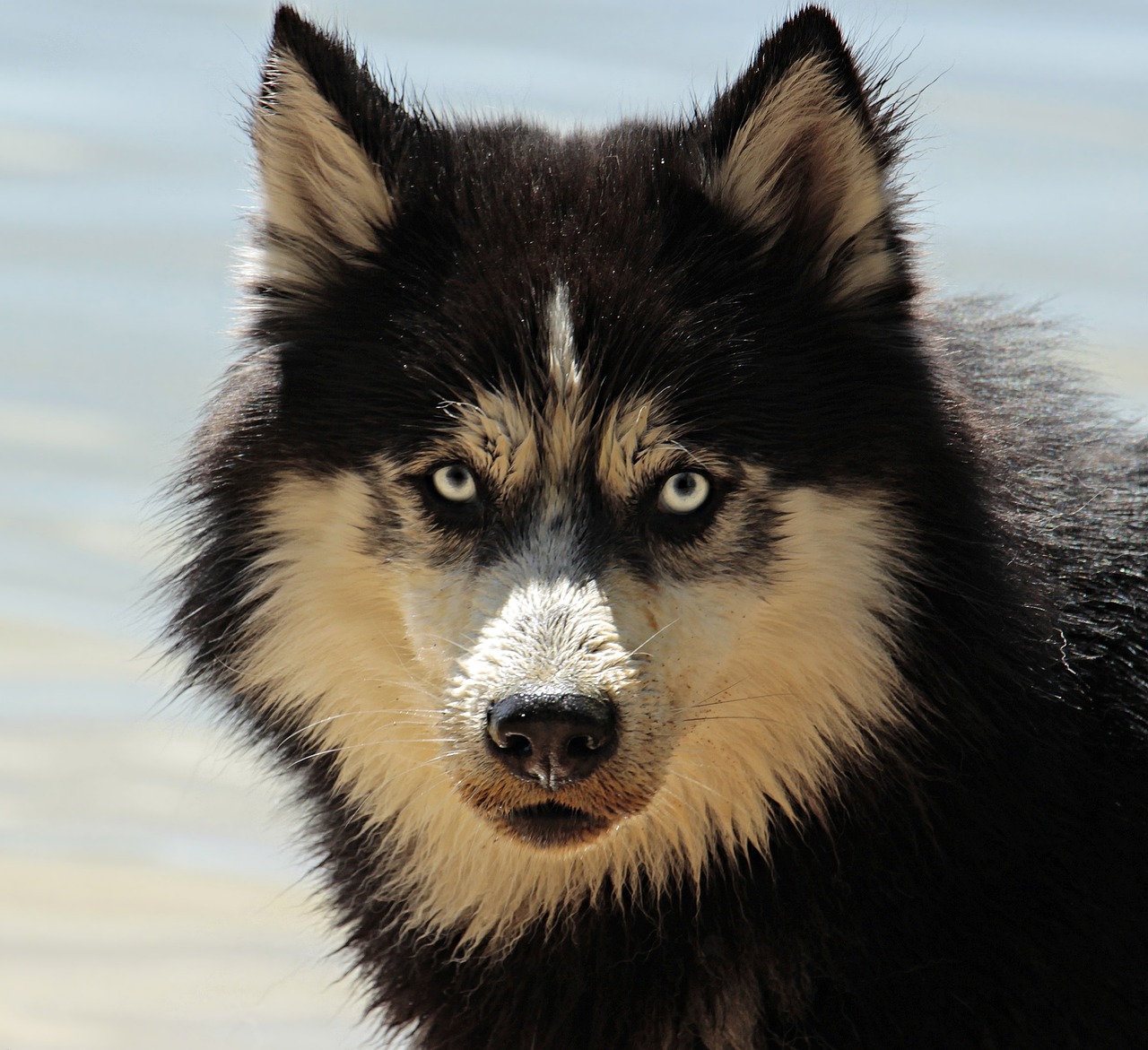
Building Trust Through Non-Verbal Communication
Establishing trust with your dog is essential for effective training, and surprisingly, a lot of that trust is built through non-verbal communication. Dogs are incredibly perceptive creatures; they pick up on our body language, facial expressions, and even our energy levels. Just like humans, dogs can sense when we’re feeling anxious or relaxed, which can significantly affect their behavior during training sessions. So, how can you leverage this to build a stronger bond with your furry friend?
First and foremost, it’s vital to be aware of your own body language. For instance, if you’re standing tall with your arms crossed, your dog might interpret that as a sign of tension or disapproval. Instead, try adopting a more open posture. Kneeling down to your dog’s level can help them feel more comfortable and secure. Think of it like this: if someone towers over you with a stern face, would you feel at ease? Probably not! Similarly, your dog wants to feel safe and understood.
Moreover, consistency in your non-verbal cues helps your dog understand what you expect from them. If you consistently use certain gestures, like pointing or clapping, your dog will begin to associate those actions with specific commands. For example, if you want your dog to sit, using a hand signal along with the verbal command can create a stronger connection in their mind. Over time, they will learn to respond to your body language just as they would to your voice.
Another critical aspect of building trust is creating a calm environment. Your body language can either promote relaxation or increase anxiety. If you’re excited and animated, your dog might mirror that energy, which could lead to distractions or hyperactivity. Conversely, maintaining a calm demeanor can help your dog feel more at ease. Consider using slow, deliberate movements and a soothing tone of voice. This not only calms your dog but also reinforces the idea that training is a positive experience.
When it comes to socialization, body language plays a pivotal role as well. Dogs are social animals, and how they interact with others can be heavily influenced by their understanding of non-verbal cues. For instance, if you’re meeting another dog, your relaxed stance and friendly demeanor can signal to your dog that it’s okay to approach and interact. On the flip side, if you appear tense or anxious, your dog may pick up on that and become hesitant or defensive. Thus, your body language can set the tone for their social interactions.
In summary, building trust through non-verbal communication is about being aware of your body language, maintaining consistency with your signals, and creating a calm environment. By doing so, you not only enhance your dog’s learning experience but also strengthen the bond between you and your furry companion. Remember, dogs are always reading us, so let’s give them the right signals!
- How can I tell if my dog trusts me? Look for signs such as relaxed body posture, wagging tails, and seeking your company during playtime or rest.
- What are some common body language signals in dogs? Common signals include tail wagging, ear position, and overall posture. A wagging tail usually signifies happiness, while a tucked tail can indicate fear or submission.
- How can I improve my dog’s socialization skills? Gradually expose your dog to new environments and other dogs while using positive reinforcement to encourage good behavior.
- Can my body language affect my dog’s behavior? Absolutely! Your dog is highly attuned to your emotions and body language, which can influence their behavior significantly.
Creating a Calm Environment
Creating a calm environment is essential for effective dog training. Just like humans, dogs are sensitive to their surroundings, and a peaceful atmosphere can significantly enhance their ability to learn. When you think about it, training your dog is not just about teaching them commands; it's about fostering a trusting relationship where they feel safe and secure. Imagine trying to learn something new while surrounded by chaos—it's nearly impossible, right? Your dog feels the same way!
To establish a serene training space, start by minimizing distractions. This means keeping the area quiet and free from loud noises or sudden movements. You might want to choose a room in your home that is less frequented by family members or other pets during training sessions. Additionally, consider the lighting; soft, natural light can create a more inviting atmosphere. A calm space will help your dog focus on you instead of getting distracted by outside stimuli.
Another important aspect of creating a calm environment is your own body language. Dogs are experts at reading human emotions, and they can pick up on our stress or anxiety. If you’re tense, your dog will likely feel that tension too. So, take a deep breath, relax your shoulders, and adopt a soft, open posture. This non-verbal communication sends a clear message to your dog that they are in a safe space. For instance, crouching down to their level and maintaining a gentle gaze can help them feel more comfortable and engaged.
Furthermore, incorporating elements that promote relaxation can be beneficial. You might want to play soft music or use calming scents, such as lavender, to soothe your dog’s nerves. Many dogs respond positively to these sensory cues, and they can help create a peaceful environment conducive to learning. Here’s a quick table summarizing some tips for creating a calm training environment:
| Tip | Description |
|---|---|
| Minimize Distractions | Choose a quiet space away from noise and interruptions. |
| Watch Your Body Language | Stay relaxed and adopt a soft posture to convey calmness. |
| Use Soothing Sounds | Play soft music to create a tranquil atmosphere. |
| Incorporate Calming Scents | Utilize essential oils like lavender to promote relaxation. |
Lastly, consistency is key. Just like you wouldn't expect a child to learn in a chaotic environment, your dog deserves the same consideration. Make a habit of training in the same calm environment to reinforce positive associations. Over time, your dog will begin to understand that training is a safe and enjoyable activity, making them more eager to learn and respond to your cues. Remember, a calm dog is a happy dog, and a happy dog is a willing learner!
- How can I tell if my dog is stressed during training? Look for signs like panting, yawning, or avoiding eye contact. If you notice these behaviors, it might be time to take a break.
- What should I do if my dog is too distracted during training? Try moving to a quieter location or using higher-value treats to regain their focus.
- Can I use body language to calm my dog? Absolutely! Gentle gestures and a relaxed demeanor can help soothe your dog and create a trusting environment.
Using Body Language in Socialization
When it comes to socializing your dog, body language plays a pivotal role that often goes unnoticed. Just like humans, dogs communicate a great deal through their posture, movements, and facial expressions. Understanding and utilizing this non-verbal communication can significantly enhance your dog's interactions with other animals and people. Imagine walking into a park with your dog, and instead of barking or lunging, they calmly approach other dogs and humans. This is the magic of effective socialization through body language!
To foster positive interactions, start by observing your dog's body language. Are their ears perked up, or are they tucked back? Is their tail wagging high and loose, or is it low and stiff? These signals can tell you a lot about how your dog feels in a social setting. For instance, a wagging tail often indicates excitement, while a tucked tail might suggest fear or anxiety. By being aware of these signals, you can guide your dog through social situations more effectively.
Moreover, your own body language is equally important. Dogs are incredibly perceptive and can pick up on your emotions and attitudes. If you approach a new dog with a tense posture or anxious demeanor, your dog may mirror that behavior, leading to a negative interaction. Instead, try to maintain a relaxed and open stance. Bend slightly at the knees, and avoid looming over your dog or the other dog. This will help your dog feel more secure and encourage them to engage positively.
It's also essential to establish a positive association with socialization experiences. When your dog meets another dog or person, use enthusiastic body language—like clapping your hands or bending down to their level—to create a friendly atmosphere. Pair these gestures with treats or praise to reinforce the behavior. For example, when your dog approaches another dog calmly, reward them immediately with a treat and a cheerful tone. This will help them associate positive experiences with socialization.
As you navigate social situations, be mindful of the environment. If your dog seems overwhelmed, take a step back. Use your body language to signal to them that it's okay to retreat. You can turn your body sideways, which is a less confrontational stance, allowing your dog to feel safe. Gradually reintroduce them to the social environment when they seem more comfortable. Remember, patience is key in socialization, and your body language can either calm or escalate the situation.
In summary, using body language effectively in your dog's socialization journey can lead to more positive interactions and a more confident pet. By being aware of both your dog's and your own body language, you can create a nurturing environment that encourages social skills and builds a strong bond between you and your furry friend.
- How can I tell if my dog is feeling anxious in social situations? Look for signs such as a tucked tail, flattened ears, or excessive yawning. These can indicate stress or discomfort.
- What should I do if my dog reacts negatively to another dog? Remain calm and try to redirect your dog's attention with treats or toys. If necessary, remove them from the situation to prevent escalation.
- How can I make socialization more enjoyable for my dog? Incorporate playtime, treats, and positive reinforcement to create a fun and engaging environment during socialization.
Frequently Asked Questions
- What is the importance of understanding canine body language?
Understanding canine body language is essential for effective communication with your dog. It helps you recognize their emotions and intentions, allowing you to respond appropriately and strengthen your bond. By interpreting signals like posture, tail position, and facial expressions, you can create a more harmonious relationship with your furry friend.
- How can I ensure consistency in my body language during training?
Consistency is key in dog training. To maintain it, use the same signals and cues every time you communicate with your dog. This means sticking to specific gestures and postures that convey your commands. By doing so, you reduce confusion and help your dog learn more effectively, making training sessions smoother and more productive.
- What are clear signals, and why are they important?
Clear signals are distinct gestures or postures that you use to communicate commands to your dog. They are crucial because they help your dog understand what you expect from them. By establishing and consistently using these clear signals, you can reinforce desired behaviors and enhance your dog's learning experience.
- How does positive reinforcement work with body language?
Positive reinforcement involves pairing physical cues with rewards to encourage desired behaviors. When you use body language alongside treats or praise, your dog learns to associate your gestures with positive outcomes. This reinforces their understanding and motivates them to repeat the behaviors you want to see.
- What are mixed signals, and how can I avoid them?
Mixed signals occur when your verbal commands do not align with your body language, leading to confusion for your dog. To avoid this, ensure that your verbal cues match your physical gestures. This clarity helps prevent misunderstandings during training sessions, allowing your dog to learn more effectively.
- How can I read my dog's signals effectively?
Reading your dog's signals involves paying attention to their body language and understanding what they are communicating. Look for signs such as tail position, ear movement, and overall posture. By interpreting these signals, you can adjust your training methods and respond to your dog's needs, fostering a more effective training environment.
- Why is building trust important in dog training?
Building trust is vital for effective dog training because it creates a safe and supportive environment for your dog. When they trust you, they are more likely to be receptive to learning and following your cues. Using body language to communicate positively can strengthen this bond, making training a more enjoyable experience for both of you.
- How can I create a calm training environment?
A calm training environment enhances your dog's ability to learn. You can create this atmosphere by using relaxed body language, speaking softly, and minimizing distractions. When your dog feels calm and secure, they are better able to focus on training, leading to more successful outcomes.
- What role does body language play in socialization?
Body language plays a crucial role in socialization by facilitating positive interactions with other dogs and people. By using appropriate body signals, you can help your dog develop confidence and good manners. This non-verbal communication can ease introductions and promote friendly behavior, making socialization a more enjoyable experience for your dog.




